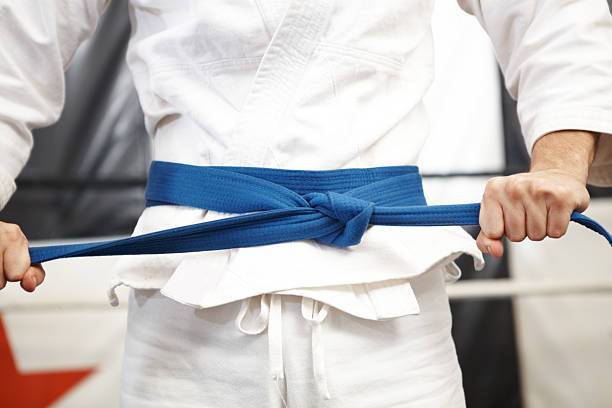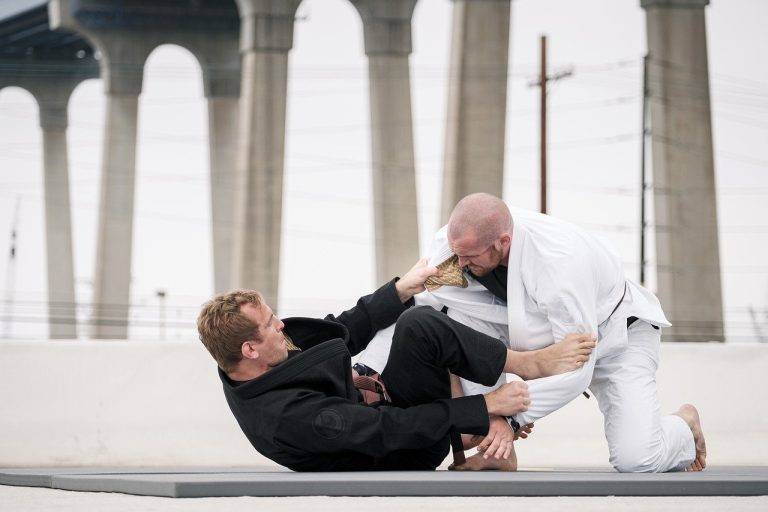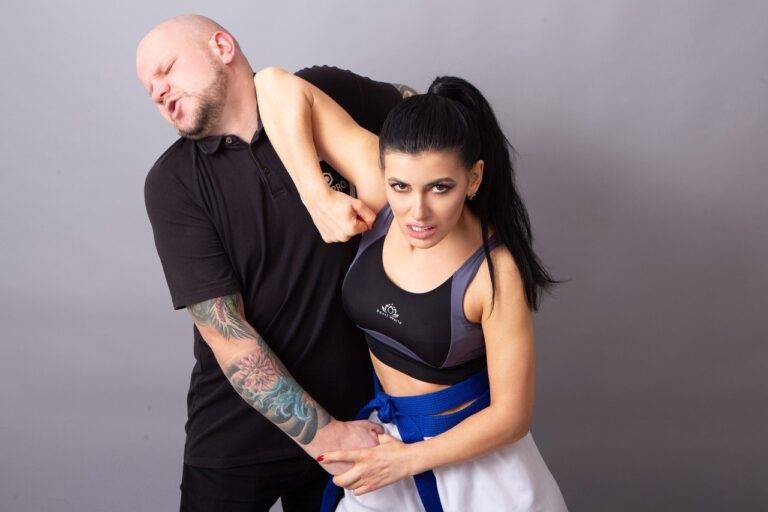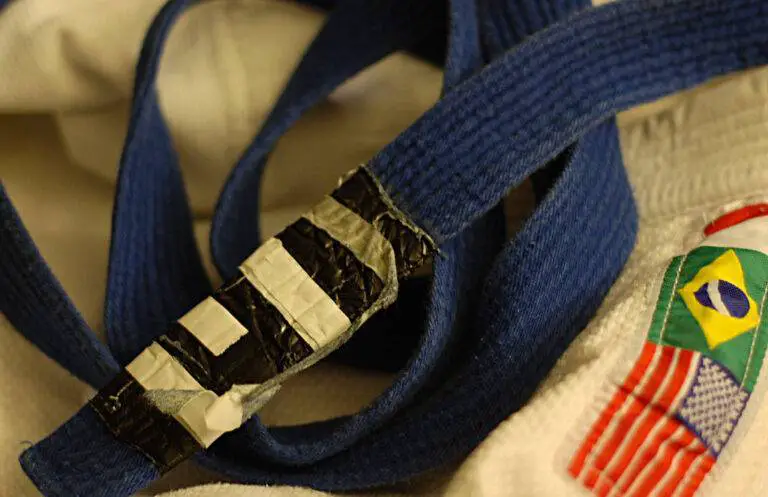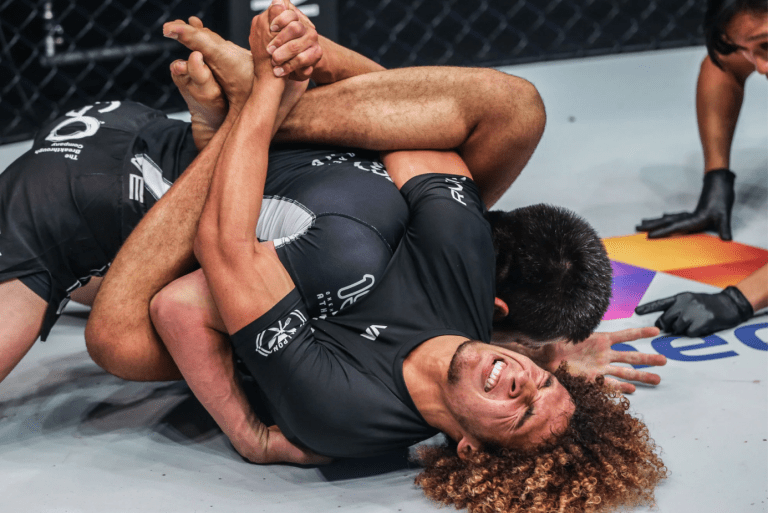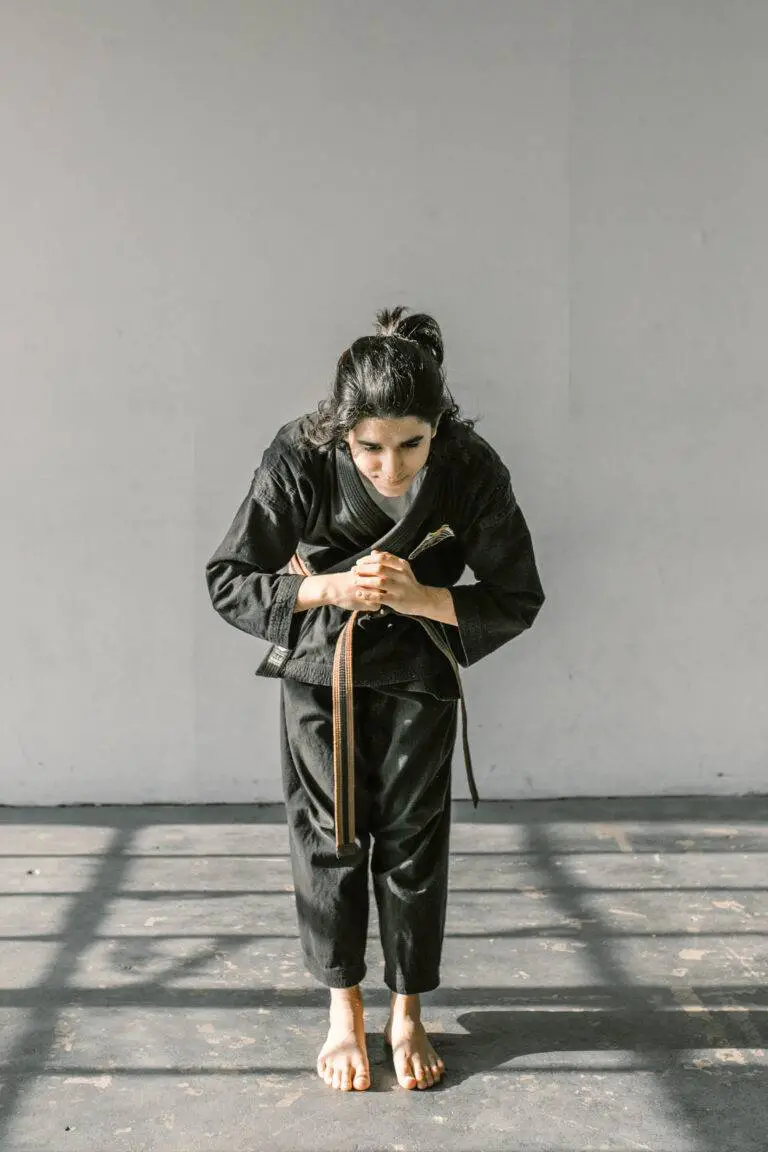How long does it take to get a blue belt in BJJ?
Generally speaking, it will take roughly 1-2 years to get to blue belt in BJJ. However there can be many factors that determine the timeframe, so lets get into it further…
What even is a blue belt, you might ask? Well, when you begin training Brazilian Jiu Jitsu one of the first things you will encounter is the belt or grade system which is a system used to classify and rank students of different skill levels. Similar to the Judo belt system, there are different categories for youth and adults, and there are degrees or stripes awarded to show progress in between belts.
Everybody starts at white belt – so the blue belt is the first awarded belt in BJJ. It’s a symbol of progression and a reward for the hard training you’ve put in during the difficult entry period that is white belt.
In this post we will explore what the BJJ grading system is, what it takes to get a blue belt and how you can get there faster.
What is a blue belt?
Now that we know what the belt grading system looks like, you might wonder what makes a blue belt? Well, a blue belt is the first belt that students are actually awarded. You can walk in the door of any school as a brand new beginner, and be given a white belt – this is the belt worn by all beginners. After a certain amount of time at white belt (this amount of time can vary, as we explore further below), you will eventually be awarded a promotion to blue belt.
Brazilian Jiu Jitsu is an incredibly deep art that can take many years to master. But the blue belt is a sign that you have passed your first checkpoint, and you have adequate knowledge of the basics.
What does it mean to be a blue belt?
Being a blue belt means that you are no longer a beginner. It means that you have demonstrated an ability to understand and apply the basic principals of Brazilian Jiu Jitsu.
For many coaches it’s not just about the skills. It can also be important to show your commitment to training by showing up regularly. Or your ability to help others by teaching some things to brand new white belts. Or even something simple like staying behind after class occasionally to help clean the mats. These are all small things the coach might look for when deciding whether or not a student is ready to be promoted to blue belt.
If you are a blue belt does that make you an expert? Absolutely not. The path to mastery in BJJ is a long one (and one that never really ends), and Blue Belt is still considered a novice belt.

How do you progress in the BJJ belt system?
While you might find some schools with formal grading systems and belt tests, for the most part Brazilian Jiu Jitsu belt promotions tend to be largely informal. Most schools will have a head instructor/coach (or sometimes a team of coaches) who will monitor the progress of students on an ongoing basis. When they feel the time is right they will announce a promotion in front of the class, and that student gets called up to receive their new belt or stripe.
Many BJJ schools will have multiple “events” per year where promotions will take place. Sometimes it is in the form of an in-house tournament, sometimes it will follow a pre-planned belt test format, or sometimes it’s a holiday or birthday celebration. Either way these days are intended as a celebration, an opportunity for students to show what they have learned and to celebrate each other’s progress. Attendance is usually encouraged but not mandatory, although making a special effort to attend these days will be a good way to build rapport with your gym/team, even if you are not getting promoted yourself.
BJJ Grading systems
The BJJ belt system was developed by the Gracie family as a way to indicate a practitioners skill and experience level. To learn more check out this article about BJJ Belt Ranks.
Most Brazilian Jiu Jitsu schools will follow the IBJJF official grading system (pictured below). As mentioned before the degree to which they follow the timelines can vary a lot but overall the belt progression remains the same. Kids and youth will go through the grey to green system and adults will go through the blue to black. All beginners start with a white belt.
And those that are fortunate enough to spend nearly a lifetime on the mats may reach the level of coral belt. These are red/black and red/white coloured belts that are award to black belts after they pass beyond their seventh degree. They are usually awarded to highly experienced and older instructors who have spent many years teaching and contributing to the community.
Here is a summary of the belt levels in BJJ and what they signify:
- White Belt: This is the first belt in the BJJ grading system. It signifies a beginner who has just started learning the art. A
- Blue Belt: This is the second belt (and the first to be awarded). It signifies an intermediate level of skill and basic technique knowledge.
- Purple Belt: This signifies a more advanced level of skill and a more well rounded knowledge base. Some purple belts begin teaching beginners or kids classes.
- Brown Belt: At the level of brown belt, practitioners have reached a very high level of skill and knowledge in BJJ techniques.
- Black Belt: This is the highest belt in the BJJ grading system. It signifies a master level of skill and knowledge. Most instructors and gym owners are black belts.
- Red and Black Belt (Coral Belt): This is a special belt that is awarded to black belts who have achieved the rank of 7th degree or higher.
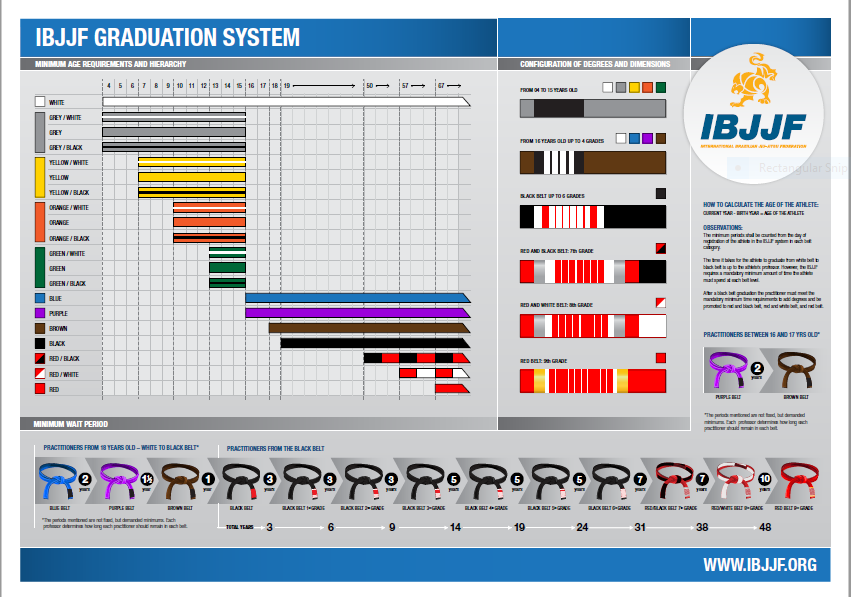
How long do you spend at each BJJ belt level?
Just as there is generally no formal testing system in BJJ, the time between stripes and belts can vary too from gym to gym (although in general stripes tend to be awarded every 3-4 months of consistent training). The IBJJF does provide official guidelines for the minimum time spent at each coloured belt, although not all gyms stick to this schedule.
According to the IBJJF [LINK] the minimum times that should be spent at each belt are:
- Blue: 1-2 years
- Purple: 1.5 years
- Brown: 1-2 years
- Black: 3 years (after this there are “degrees” of promotion)
How long does it take to get to Blue Belt in BJJ?
It usually takes between 6 months to 3 years. While there is no official data available on this, anecdotally it seems the average time to blue belt is 1.5 years. However it really depends on many different factors that will al be considered by your coach when it comes to promotion time:
Here is a typical timeline of the process of earning a blue belt, including the skills and techniques that a student is typically expected to have mastered at each stripe of the white belt:
- First few months: During this time, a student is typically introduced to the fundamental principles of BJJ, including concepts such as leverage, positioning, and control. They will learn basic techniques such as the guard, mount, and escapes from these positions.
- 6 months -2 years: As a student progresses through the white belt rank, they will continue to develop their understanding of BJJ principles and expand their technical repertoire. They may also start to participate in sparring (live rolling) sessions, which will help them learn how to apply the techniques they have learned in a more dynamic, unpredictable setting.
- 2-3 years: By this point, a student should have a solid foundation in BJJ and be able to demonstrate proficiency in a wide range of techniques. They should be comfortable sparring and able to apply techniques effectively in rolling.
- 3+ years: At this point, a student may be eligible for promotion to blue belt, depending on the expectations and policies of the specific academy where they are training. To be eligible for promotion, a student typically needs to have consistently demonstrated a high level of technical proficiency, a strong understanding of BJJ principles, and a dedication to training and improvement.
It’s important to note that the timeline above is just a rough guide and that the actual length of time it takes to earn a blue belt can vary significantly depending on the individual and their training circumstances.
Factors that can influence promotion to blue belt
It’s not just time on the mat that will guarantee promotion to Blue Belt. Coaches will be looking at different aspects of each students performance, including the following:
Time Spent Training
This is usually the most important consideration. If you don’t show up, you can’t expect to be promoted. Coaches will be looking not just at training time, but consistency. It’s no use showing up to class 5 days a week for one month but then only once a week for the next 3 months. When it comes to training time, consistency is key.
Attitude
Another important aspect of BJJ is your attitude. Anyone who trains will quickly learn how humbling it can be at first – being submitted by people of all sizes and ages, over and over, can be a big hit to the ego. But being able to take these little defeats, learn from them and keep going, is a quality that won’t go unnoticed by your coach. The worst thing to do is get angry or complain about loosing or not progressing – displaying this attitude is a sure way to prevent you from getting promoted.
Application of Technique
Technique is everything in BJJ. At every belt level coaches are looking for evidence that their students not only understand technique, but are able to apply them. The best way to show your skills is in a competitive situation. So if you have an opportunity to compete at a local tournament, or even an in-house event, it’s a great way to show what you have learned.
This does not mean you have to submit all your opponents! Coaches are looking at every aspect of your game, beyond just submissions, including – grips, defence, hip movement, posture, etc.
Community and social integration
Even though BJJ is technically an individual sport – when it comes to training it can be a very social, family/team environment. You might see some schools talk about the gym being “their family” and whether or not you want to take it this far, there’s no doubt that it can be a great place to meet new friends
Even if you are not there to make friends, it can make training easier and much more fun if you do. And coaches will also notice it when you integrate well into the group. This can involve making small talk before or after class, helping to clean up, or maybe even joining social gatherings/events with team mates outside of the gym.
What can I do to increase my chances of reaching blue belt?
After all this you might still ask: How long does it take to get good at BJJ? The first and most important thing to remember is this: Just show up. As simple as it sounds, consistent attendance is the best route to progress. As with any new hobby, it can be hard to create a habit, and life gets in the way. But the more you can make it to class, the faster you will progress.
Here are some tips to help you reach your blue belt:
- Make a schedule for attending class and stick to it. Even if its just 1-2 days per week.
- Make the most of your training time – listen and ask questions, dont just go through the motions.
- Don’t skip warm ups and stretches! This will help you avoid injury.
- Get to know your teammates – stay back to help clean up. Social integration not only makes the experience better, but is usually looked upon favourably by your coach.
- Help new people. Remember we all have to start somewhere.
- DON’T ask about promotions or stripes. Even if you think its time, coaches generally do not like it when they get asked or pushed about progress.
- Ask questions! It’s good to show the coach that you are curious to learn.
- Buggy Choke: The Complete Guide - March 6, 2024
- Jiu Jitsu World League: Your Complete Guide - March 5, 2024
- How much do UFC referees make? A comprehensive guide - March 5, 2024

